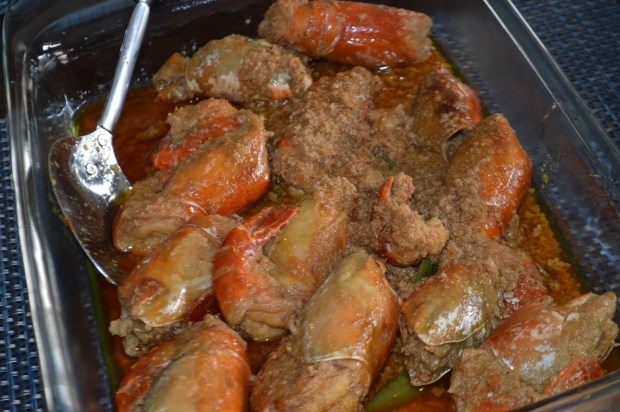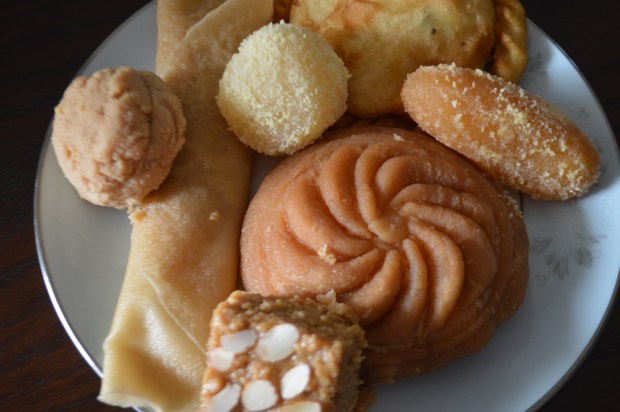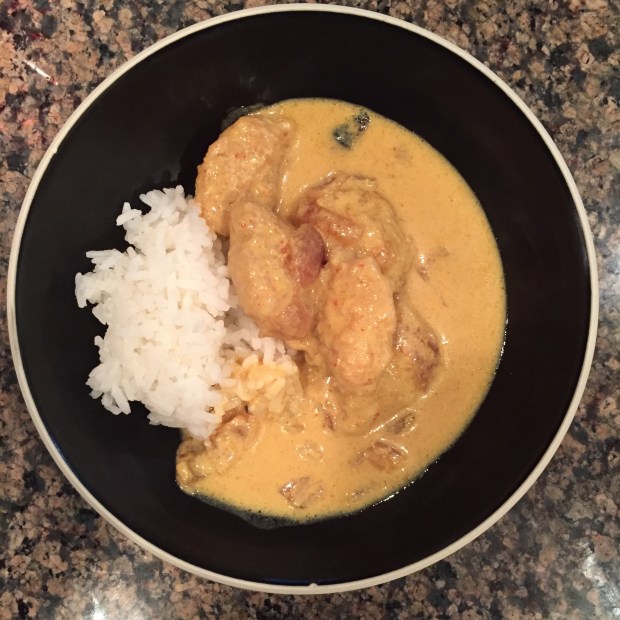This is not a celebration of food poem but rather about scarcity. Allen Ginsberg was writing about famine and war in Bangladesh, then East Pakistan, 1971.
Millions of babies watching the skies
Bellies swollen, with big round eyes
On Jessore Road–long bamboo huts
Noplace to shit but sand channel ruts
Millions of fathers in rain
Millions of mothers in pain
Millions of brothers in woe
Millions of sisters nowhere to go
One Million aunts are dying for bread
One Million uncles lamenting the dead
Grandfather millions homeless and sad
Grandmother millions silently mad
Millions of daughters walk in the mud
Millions of children wash in the flood
A Million girls vomit & groan
Millions of families hopeless alone
Millions of souls nineteenseventyone
homeless on Jessore road under grey sun
A million are dead, the million who can
Walk toward Calcutta from East Pakistan
Taxi September along Jessore Road
Oxcart skeletons drag charcoal load
past watery fields thru rain flood ruts
Dung cakes on treetrunks, plastic-roof huts
Wet processions Families walk
Stunted boys big heads don’t talk
Look bony skulls & silent round eyes
Starving black angels in human disguise
Mother squats weeping & points to her sons
Standing thin legged like elderly nuns
small bodied hands to their mouths in prayer
Five months small food since they settled there
on one floor mat with small empty pot
Father lifts up his hands at their lot
Tears come to their mother’s eye
Pain makes mother Maya cry
Two children together in palmroof shade
Stare at me no word is said
Rice ration, lentils one time a week
Milk powder for warweary infants meek
No vegetable money or work for the man
Rice lasts four days eat while they can
Then children starve three days in a row
and vomit their next food unless they eat slow.
On Jessore road Mother wept at my knees
Bengali tongue cried mister Please
Identity card torn up on the floor
Husband still waits at the camp office door
Baby at play I was washing the flood
Now they won’t give us any more food
The pieces are here in my celluloid purse
Innocent baby play our death curse
Two policemen surrounded by thousands of boys
Crowded waiting their daily bread joys
Carry big whistles & long bamboo sticks
to whack them in line They play hungry tricks
Breaking the line and jumping in front
Into the circle sneaks one skinny runt
Two brothers dance forward on the mud stage
Teh gaurds blow their whistles & chase them in rage
Why are these infants massed in this place
Laughing in play & pushing for space
Why do they wait here so cheerful & dread
Why this is the House where they give children bread
The man in the bread door Cries & comes out
Thousands of boys and girls Take up his shout
Is it joy? is it prayer? “No more bread today”
Thousands of Children at once scream “Hooray!”
Run home to tents where elders await
Messenger children with bread from the state
No bread more today! & and no place to squat
Painful baby, sick shit he has got.
Malnutrition skulls thousands for months
Dysentery drains bowels all at once
Nurse shows disease card Enterostrep
Suspension is wanting or else chlorostrep
Refugee camps in hospital shacks
Newborn lay naked on mother’s thin laps
Monkeysized week old Rheumatic babe eye
Gastoenteritis Blood Poison thousands must die
September Jessore Road rickshaw
50,000 souls in one camp I saw
Rows of bamboo huts in the flood
Open drains, & wet families waiting for food
Border trucks flooded, food cant get past,
American Angel machine please come fast!
Where is Ambassador Bunker today?
Are his Helios machinegunning children at play?
Where are the helicopters of U.S. AID?
Smuggling dope in Bangkok’s green shade.
Where is America’s Air Force of Light?
Bombing North Laos all day and all night?
Where are the President’s Armies of Gold?
Billionaire Navies merciful Bold?
Bringing us medicine food and relief?
Napalming North Viet Nam and causing more grief?
Where are our tears? Who weeps for the pain?
Where can these families go in the rain?
Jessore Road’s children close their big eyes
Where will we sleep when Our Father dies?
Whom shall we pray to for rice and for care?
Who can bring bread to this shit flood foul’d lair?
Millions of children alone in the rain!
Millions of children weeping in pain!
Ring O ye tongues of the world for their woe
Ring out ye voices for Love we don’t know
Ring out ye bells of electrical pain
Ring in the conscious of America brain
How many children are we who are lost
Whose are these daughters we see turn to ghost?
What are our souls that we have lost care?
Ring out ye musics and weep if you dare–
Cries in the mud by the thatch’d house sand drain
Sleeps in huge pipes in the wet shit-field rain
waits by the pump well, Woe to the world!
whose children still starve in their mother’s arms curled.
Is this what I did to myself in the past?
What shall I do Sunil Poet I asked?
Move on and leave them without any coins?
What should I care for the love of my loins?
What should we care for our cities and cars?
What shall we buy with our Food Stamps on Mars?
How many millions sit down in New York
& sup this night’s table on bone & roast pork?
How many millions of beer cans are tossed
in Oceans of Mother? How much does She cost?
Cigar gasolines and asphalt car dreams
Stinking the world and dimming star beams–
Finish the war in your breast with a sigh
Come tast the tears in your own Human eye
Pity us millions of phantoms you see
Starved in Samsara on planet TV
How many millions of children die more
before our Good Mothers perceive the Great Lord?
How many good fathers pay tax to rebuild
Armed forces that boast the children they’ve killed?
How many souls walk through Maya in pain
How many babes in illusory pain?
How many families hollow eyed lost?
How many grandmothers turning to ghost?
How many loves who never get bread?
How many Aunts with holes in their head?
How many sisters skulls on the ground?
How many grandfathers make no more sound?
How many fathers in woe
How many sons nowhere to go?
How many daughters nothing to eat?
How many uncles with swollen sick feet?
Millions of babies in pain
Millions of mothers in rain
Millions of brothers in woe
Millions of children nowhere to go













 Shrimp Koftas in Coconut Sauce (Chingri Koftai Narkel)
Shrimp Koftas in Coconut Sauce (Chingri Koftai Narkel)
















